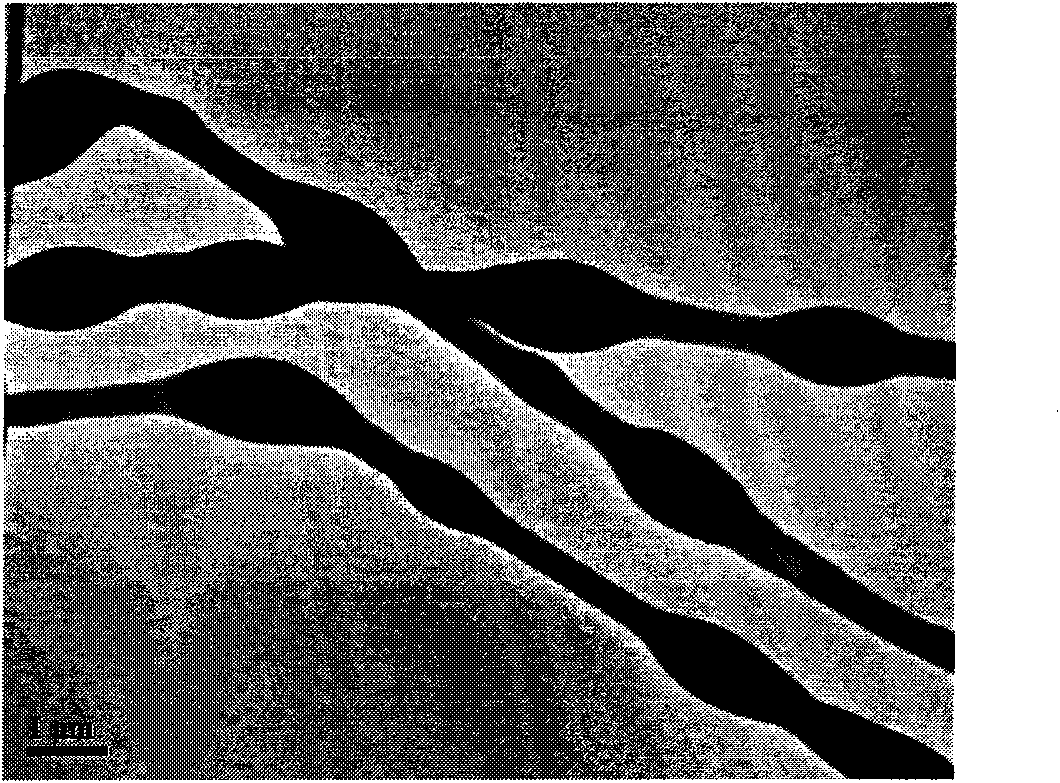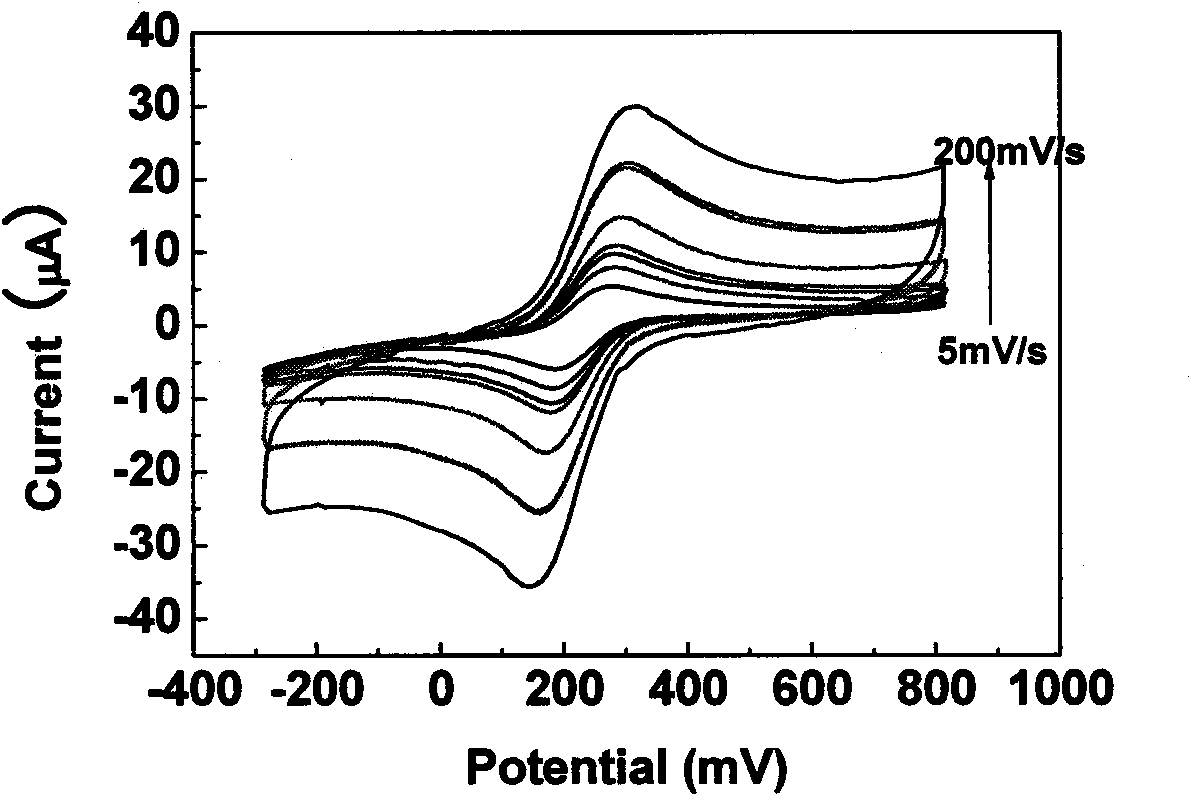Shell core type Poly(3,4-ethylenedioxythiophene)/polyethelene alcohol fiber composite film and preparing method thereof
A technology of polyethylene dioxythiophene and polyvinyl alcohol fiber, which is applied in fiber processing, conjugated synthetic polymer rayon, chemical post-processing of synthetic polymer rayon, etc., can solve poor solubility, hinder composite and other problems, to achieve the effect of simple process, simple and easy method, and good electrical activity.
- Summary
- Abstract
- Description
- Claims
- Application Information
AI Technical Summary
Problems solved by technology
Method used
Image
Examples
Embodiment 1
[0018] Embodiment 1: The degree of alcoholysis of PVA is 98mol%, and the degree of polymerization (n) is 1750±50.
[0019] Add 700 mg of PVA to 10 ml of deionized water, heat in an oil bath at 90°C for 2 hours to completely dissolve the PVA, and cool to room temperature to obtain an aqueous solution of PVA. Add 30 mg of SDS to the above solution, stir for 20 minutes to dissolve the SDS, then add 315 μL of EDOT monomer under stirring, ultrasonically disperse for 30 minutes, and finally stir at room temperature for 6 hours to obtain a uniform emulsion, which is electrospun for 24 hours . The spinning parameters are: voltage 11KV, flow rate 0.2mL / h, distance 15cm. Cut the spun film into a size of 1cm×1cm, put it into a gas collecting bottle filled with chlorine gas, and leave it sealed for 24 hours to obtain a light blue film.
[0020] The fibers obtained by electrospinning have a discontinuous core-shell spindle structure, and EDOT is located in the core layer of the spindle s...
Embodiment 2
[0022] Add 700 mg of PVA to 10 ml of deionized water, heat in an oil bath at 90°C for 2 hours to completely dissolve the PVA, and cool to room temperature to obtain an aqueous solution of PVA. Add 30 mg of SDS to the above solution, stir for 20 minutes to dissolve the SDS, then add 175 μL of EDOT monomer under stirring, ultrasonically disperse for 30 minutes, and finally stir at room temperature for 6 hours to obtain a uniform emulsion, which is electrospun for 24 hours . The spinning parameters are: voltage 11KV, flow rate 0.2mL / h, distance 15cm. Cut the spun film into a size of 1cm×1cm, put it into a gas collecting bottle filled with chlorine gas, and leave it sealed for 24 hours to obtain a light blue film.
[0023] The fibers obtained by electrospinning have a discontinuous core-shell spindle structure, and EDOT is located in the core layer of the spindle structure. The average diameter of the fiber is 350nm, the diameter of the core layer of the spindle structure is 680...
Embodiment 3
[0025] Add 700 mg of PVA to 10 ml of deionized water, heat in an oil bath at 90°C for 2 hours to completely dissolve the PVA, and cool to room temperature to obtain an aqueous solution of PVA. Add 30 mg of SDS to the above solution, stir for 20 minutes to dissolve the SDS, then add 245 μL of EDOT monomer under stirring, ultrasonically disperse for 30 minutes, and finally stir at room temperature for 6 hours to obtain a uniform emulsion, which is electrospun for 24 hours . The spinning parameters are: voltage 11KV, flow rate 0.2mL / h, distance 15cm. Cut the spun film into a size of 1cm×1cm, put it into a gas collecting bottle filled with chlorine gas, and leave it sealed for 24 hours to obtain a light blue film.
[0026] The fibers obtained by electrospinning have a discontinuous core-shell spindle structure, and EDOT is located in the core layer of the spindle structure. The average diameter of the fiber is 350nm, the diameter of the core layer of the spindle structure is 690...
PUM
| Property | Measurement | Unit |
|---|---|---|
| Thickness | aaaaa | aaaaa |
| Electron mobility | aaaaa | aaaaa |
| Diameter | aaaaa | aaaaa |
Abstract
Description
Claims
Application Information
 Login to View More
Login to View More - R&D
- Intellectual Property
- Life Sciences
- Materials
- Tech Scout
- Unparalleled Data Quality
- Higher Quality Content
- 60% Fewer Hallucinations
Browse by: Latest US Patents, China's latest patents, Technical Efficacy Thesaurus, Application Domain, Technology Topic, Popular Technical Reports.
© 2025 PatSnap. All rights reserved.Legal|Privacy policy|Modern Slavery Act Transparency Statement|Sitemap|About US| Contact US: help@patsnap.com



